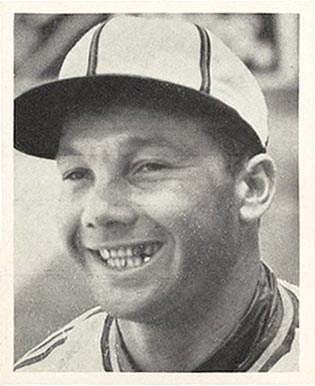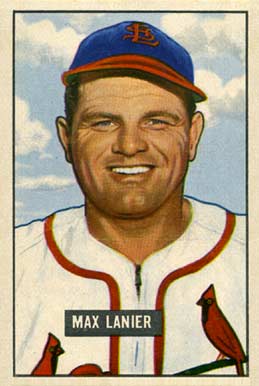
Major League Baseball (MLB) is a professional baseball league and the highest level of organized baseball in the United States and Canada. One of the big four major leagues, MLB comprises 30 teams, divided equally between the National League (NL) and the American League (AL), with 29 in the United States and 1 in Canada. Formed in 1876 and 1901, respectively, the NL and AL cemented their cooperation with the National Agreement in 1903, making MLB the oldest major professional sports league in the world. They remained legally separate entities until 2000, when they merged into a single organization led by the Commissioner of Baseball. MLB is headquartered in Midtown Manhattan.
The Negro leagues were United States professional baseball leagues comprising teams of African Americans. The term may be used broadly to include professional black teams outside the leagues and it may be used narrowly for the seven relatively successful leagues beginning in 1920 that are sometimes termed "Negro Major Leagues".

The Federal League of Base Ball Clubs, known simply as the Federal League, was an American professional baseball league that played its first season as a minor league in 1913 and operated as a "third major league", in competition with the established National and American Leagues, from 1914 to 1915.

The history of baseball can be broken down into various aspects: by era, by locale, by organizational-type, game evolution, as well as by political and cultural influence. The game evolved from older bat-and-ball games already being played in England by the mid-18th century. This game was brought by immigrants to North America, where the modern version developed. By the late 19th century, baseball was widely recognized as the national sport of the United States, and had begun to spread throughout the Pacific Rim and the Americas. Today, baseball is popular in North America and parts of Central and South America, the Caribbean, and East Asia, particularly in Japan, South Korea, and Taiwan.
The color line, also known as the color barrier, in American baseball excluded players of black African descent from Major League Baseball and its affiliated Minor Leagues until 1947. Racial segregation in professional baseball was sometimes called a gentlemen's agreement, meaning a tacit understanding, as there was no written policy at the highest level of organized baseball, the major leagues. A high minor league's vote in 1887 against allowing new contracts with black players within its league sent a powerful signal that eventually led to the disappearance of blacks from the sport's other minor leagues later that century, including the low minors. After the line was in virtually full effect in the early 20th century, many black baseball clubs were established, especially during the 1920s to 1940s when there were several Negro leagues. During this period, American Indians and native Hawaiians, including Prince Oana, were able to play in the Major Leagues. The color line was broken for good when Jackie Robinson signed with the Brooklyn Dodgers organization for the 1946 season. In 1947, both Robinson in the National League and Larry Doby with the American League's Cleveland Indians appeared in games for their teams.
The reserve clause, in North American professional sports, was part of a player contract which stated that the rights to players were retained by the team upon the contract's expiration. Players under these contracts were not free to enter into another contract with another team. Once signed to a contract, players could, at the team's discretion, be reassigned, traded, sold, or released.

Daniel Lewis Gardella was an American professional baseball player who played most of his Major League Baseball (MLB) career as a left fielder with the New York Giants from 1944 to 1945. Born in New York City, he batted and threw left-handed.

Roberto Estalella Ventoza [es-tah-LAY-yah] was a Cuban professional baseball outfielder and third baseman, who played in Major League Baseball (MLB) for the Washington Senators, St. Louis Browns (1941), and Philadelphia Athletics. He was selected to represent the American League (AL) in the ill-fated 1945 Major League Baseball All-Star Game, which was scheduled for July 10 at Fenway Park but never played because of World War II restrictions on civilian domestic travel.

Arnold Malcolm "Mickey" Owen was an American professional baseball player, coach and scout. He played as a catcher for 13 seasons in Major League Baseball between 1937 and 1954 for the St. Louis Cardinals, Brooklyn Dodgers, Chicago Cubs and Boston Red Sox. Considered an outstanding defensive catcher, his career was nonetheless marred by a crucial error that he committed during the 1941 World Series.
An independent baseball league is a professional baseball league in the United States or Canada that is not overseen by Major League Baseball or its affiliated Minor League Baseball system.

Hubert Max Lanier was an American professional baseball pitcher. He spent most of his Major League Baseball (MLB) career with the St. Louis Cardinals, but also played for the New York Giants and St. Louis Browns. He led the National League in earned run average in 1943, and was the winning pitcher of the clinching game in the 1944 World Series against the Browns. His son Hal became a major league infielder and manager.

The Mexican Baseball League is a professional baseball league based in Mexico. It is the oldest running professional sports league in the country.
Flood v. Kuhn, 407 U.S. 258 (1972), was a decision by the Supreme Court of the United States that preserved the reserve clause in Major League Baseball (MLB) players' contracts. By a 5–3 margin, the Court reaffirmed the antitrust exemption that had been granted to professional baseball in 1922 under Federal Baseball Club v. National League, and previously affirmed by Toolson v. New York Yankees, Inc. in 1953. While the majority believed that baseball's antitrust exemption was anomalous compared to other professional sports, it held that any changes to the exemption should be made through Congress and not the courts.
Toolson v. New York Yankees, 346 U.S. 356 (1953), is a United States Supreme Court case in which the Court upheld, 7–2, the antitrust exemption first granted to Major League Baseball (MLB) three decades earlier in Federal Baseball Club v. National League. It was also the first challenge to the reserve clause which prevented free agency, and one of the first cases heard and decided by the Warren Court.

Fred Turner Martin was an American professional baseball pitcher, coach, manager and scout. Born in Williams, Oklahoma, Martin threw and batted right-handed, stood 6 feet 1 inch (185 cm) tall and weighed 185 pounds (84 kg) during his active playing career.

Minor League Baseball (MiLB) is a professional baseball organization below Major League Baseball (MLB), including teams affiliated with MLB clubs.

Michael Henry Sexton was an American baseball executive, whose most significant role was as president of the National Association of Professional Baseball Leagues from 1910 through 1932.
The Cleveland Green Sox were a baseball club based in Cleveland, Ohio. In 1913, the Green Sox were charter members of the Federal League. The Cleveland Green Sox were managed by Baseball Hall of Fame member Cy Young and played just the 1913 season before the franchise was folded. Finishing in second place, the Green Sox hosted home games at Luna Park. The Green Sox franchise was ultimately forced out in Cleveland when the major league Cleveland Naps relocated the Toledo Mud Hens to Cleveland for the 1914 season.
The 1946 Mexican League season was the 22nd season in the history of the Mexican League (LMB). It was contested by eight teams. Alijadores de Tampico won their second consecutive title, finishing with a records of 56 wins and 41 losses, beating the runners-up, Diablos Rojos del México, by one game.
The Cuban Federation League was a winter league circuit in the mid-1940s that briefly challenged the Cuban League's status as the top professional baseball league in Cuba. Founded in 1946, its fleeting existence was notable as a flashpoint in the conflict between "organized" Major League Baseball and the "outlaw" Mexican League; this conflict directly led to the demise of the original Federation League after only one season, after which it was reformed into the Liga Nacional. Both incarnations of the league played most of their games at the Estadio La Tropical in Havana.











